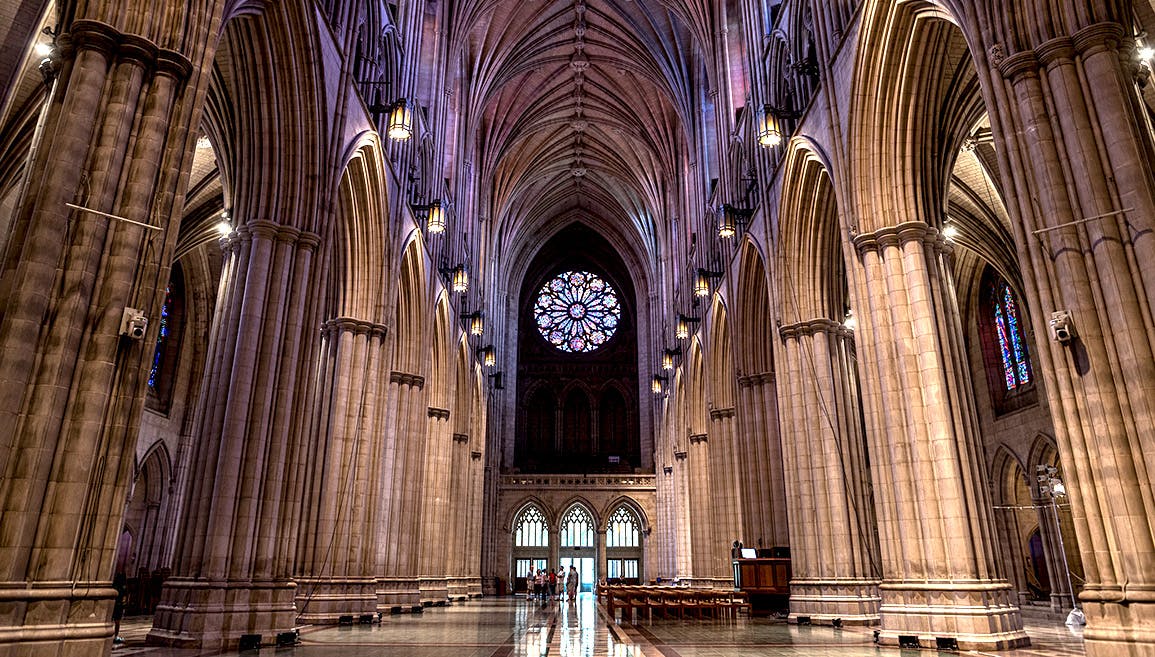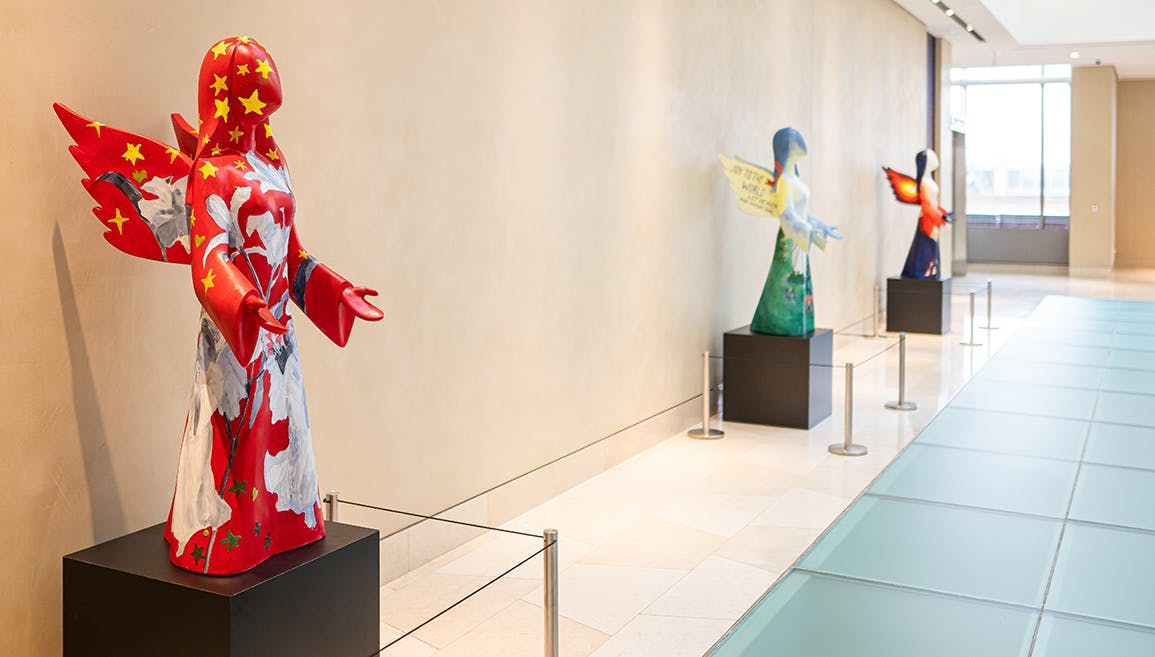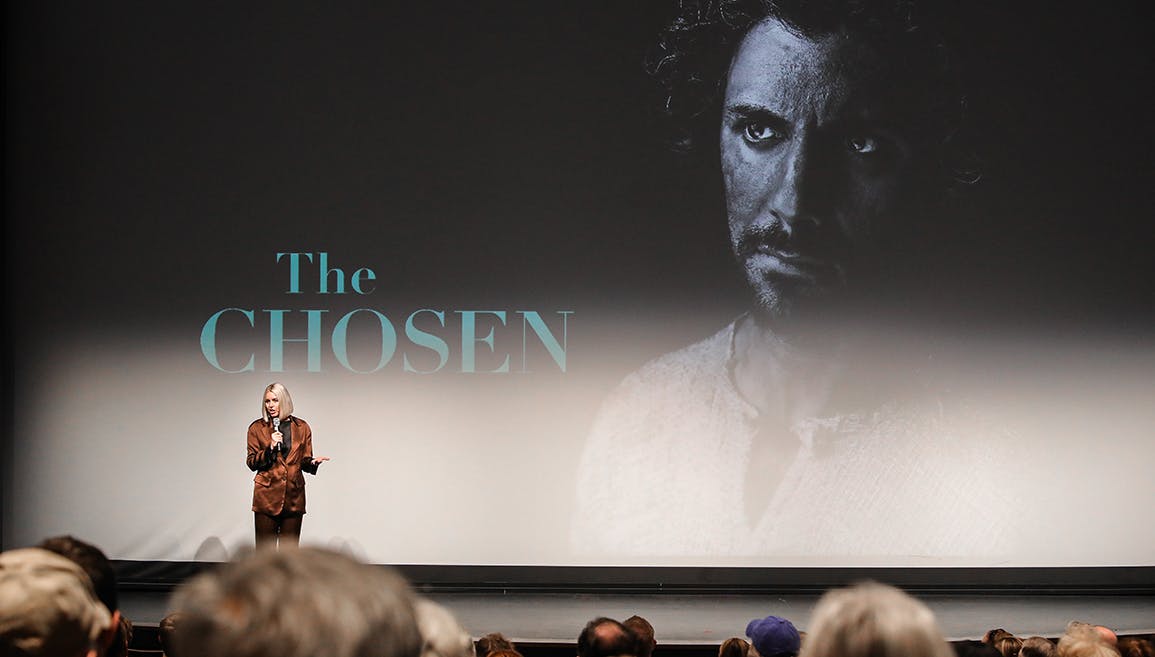Christmas Carols: Stories of Your Favorite Christmas Classics

“He who sings prays twice!”
— St. Augustine
This year for Christmas at Museum of the Bible we’re celebrating the sounds of Christmas. One of the most joyful sounds of the season is the singing of carols. Keep reading to find out more about some of your favorites and to see the ongoing impact of the Bible every time we go caroling.
There are nearly 10,000 songs about or for Christmas (9,274 songs to be exact). Since the average song runs approximately 3.5 minutes, it means you would have to sing Christmas songs 24/7 from December 1 to December 24 to sing them all. Bring a throat lozenge.
Like many traditions, carols weren’t originally just for Christmas. The word “carol” originally meant to dance or indicated the song danced to. The first Christmas carol came around AD 129, just 30 years after the death of the apostle John (also known as John the Evangelist). The bishop of Rome at the time, Telesphorus, decreed that “In the Holy Night of the Nativity of our Lord and Savior, all shall solemnly sing the ‘Angel’s Hymn.’” The lyrics, “Glory to God in the highest heaven, and on earth peace to those on whom his favor rests,” come from Luke 2:14.
The earliest carols were written and sung in Latin, making it difficult for many to understand them and, therefore, less popular. However, in 1223, when St. Francis of Assisi began his Nativity plays in Italy, songs and canticles sung in the language of the people watching told the story of Jesus’s birth. This helped the new carols spread throughout Europe.
Not everybody has thought well of carols. In the United Kingdom, Oliver Cromwell outlawed the public singing of carols in 1644. He banned Christmas celebrations, too. Most continued singing carols in secret, so these songs survived. In 1660, the restoration of the British monarchy abolished all legislation enacted from 1642 to 1660, so Christmas was once again celebrated with feasts, festivities, and carols.
Unlike retail stores today, which start playing Christmas music in November, carols were intended to be sung from Advent—the period observed the first of the four Sundays before Christmas—until Christmas Day. Christmas’s conclusion is marked by the feast of Epiphany (usually January 6), the day when Christians celebrate the revelation of baby Jesus and when carols often stopped.
So, what makes a carol a Christmas carol? They are commonly defined as uplifting melodies with minor and diminished chords, such as in “God Rest Ye, Merry Gentlemen,” centered upon the birth of Jesus and focusing on the story of hope, joy, and humility.
Let’s look at the history of a few of the most popular carols through the years.
John Audelay, an Augustinian monk known as Blind John, wrote some of the earliest English Christmas carols. On his deathbed in 1426, he put together a collection of his writings, including his carols. Although none of Blind John’s carols are sung today, “God Rest Ye, Merry Gentlemen”—whose author is unknown (but not likely Blind John)—dates to that period. The tune is mentioned in Charles Dickens’s classic, A Christmas Carol, published in 1843, where the singing of this song so annoyed the miser that “Scrooge seized the ruler with such energy of action, that the singer fled in terror.”
There are several songs called the “O” songs that name Christ by different biblical titles: wisdom, Adonai, the root of Jesse, the key of David, dayspring or radiant dawn, king of nations (or “of the Gentiles”), and Emmanuel. Anglican priest and hymn writer John Mason Neale (1818–1866) compiled many of these hymns. He also translated the early and medieval Greek and Latin hymns for feasts and fasts throughout the Christian year. In 1851, “O Come, O Come, Emmanuel” appeared in Medieval Hymns and Sequences with Neale’s notation: “This Advent hymn is little more than a versification of some of the Christmas antiphons commonly called the O’s.” If you think “O Come, O Come Emmanuel” sounds like a Gregorian chant, you’re right. Each antiphon starts with the exclamation “O” and is chanted as part of the Liturgy of the Hours by Roman Catholic and Anglican communities around the world as Christmas approaches.
The lyrics of “O Come, O Come Emmanuel” go back to at least the twelfth century, and the melody as far back as the fifteenth century. Although the song is sung in many languages, the same melody is used everywhere; the tune was first put to the lyrics when it was translated into English.
“O Come, All Ye Faithful” is another one of the “O” songs. Although probably composed by Cistercian monks in the Middle Ages, it was an exiled English Catholic that produced the English version. Since practicing the Catholic faith in England from 1588 to 1829 was illegal, John Wade escaped to France. Known for his calligraphy, he was a successful musical copyist and penned “O Come, All Ye Faithful” in 1751. It is not known if he wrote the song, but he usually gets the credit.
“Silent Night” was penned in 1818 by a young Austrian priest who asked the church organist to write a melody to be played on the guitar. Why would an organist who barely knew how to play guitar use that instrument for Christmas Mass? It would seem the church organ was out of commission. Whether it was damaged by flooding or hungry church mice is unknown, but the result was a simple, touching song that became one of the most frequently recorded Christmas carols. Father Joseph Mohr, of Austria, wrote the words to this famous carol just in time for the St. Nicholas Church’s Christmas service in the Austrian town of Oberndorf. The arrangement—originally meant for the guitar—was composed, but in another turn of events, he surprised a few parents by having children debut the carol at the Midnight Mass on Christmas Eve. Their performance was so flawless there was no accompaniment.
In 1847, a French parish priest asked a local poet to write a Christmas carol, which quickly spread throughout France. The hauntingly beautiful “O, Holy Night” was an instant hit, but the French church soon banned it when they discovered the author was a socialist and the composer Jewish. But people continued to sing it, and in 1871, on Christmas Eve during the Franco-Prussian War, a French soldier ran out of his trench unarmed and began to sing this carol. Silence fell and when he was finished, a German soldier came out and sang a favorite German carol. A Christmas ceasefire followed.
Another near-death experience brought about “What Child Is This?” In 1865, William Chatterton Dix, a manager at an insurance company, was bedridden with a life-threatening illness that had re-ignited his faith. When the hymn was finally published in 1871, it was set to the tune of “Greensleeves.”
Wondering if any American songs are near the top of the list? “Away in a Manger,” written around 1885, was probably composed by German Lutherans in Pennsylvania. Indeed, most sources note the hymn first appeared with two stanzas in the Little Children’s Book for Schools and Families, a Sunday school collection published in 1885 by the Evangelical Lutheran Church in North America.
“The Little Drummer Boy” is another American original—maybe. Written in 1940 by a schoolteacher, Katherine Kennicott Davis, she noted on her manuscript, “Czech carol freely transcribed by K.K.D.,” but did not specify the carol. The song is similar in story to a twelfth-century legend, “The Juggler of Notre Dame.” In the story, the old, poor juggler had no gift for Jesus so he went to church on Christmas night, and in front of the statue of Mary holding baby Jesus, he juggled the best he’d ever juggled, and when he was finished, Jesus was smiling.
All these carols and more show the Bible’s influence in their lyrics, and they remind us of its impact every time they’re sung. As you sing your favorite Christmas carols this season, remember the event that started it all, captured in the first Christmas carol, when the angel announced the birth of Jesus and the heavenly host sang: “Glory to God in the highest heaven, and on earth peace to those on whom his favor rests.”
By Judy Hilovsky, Copy Editor and Copywriter


